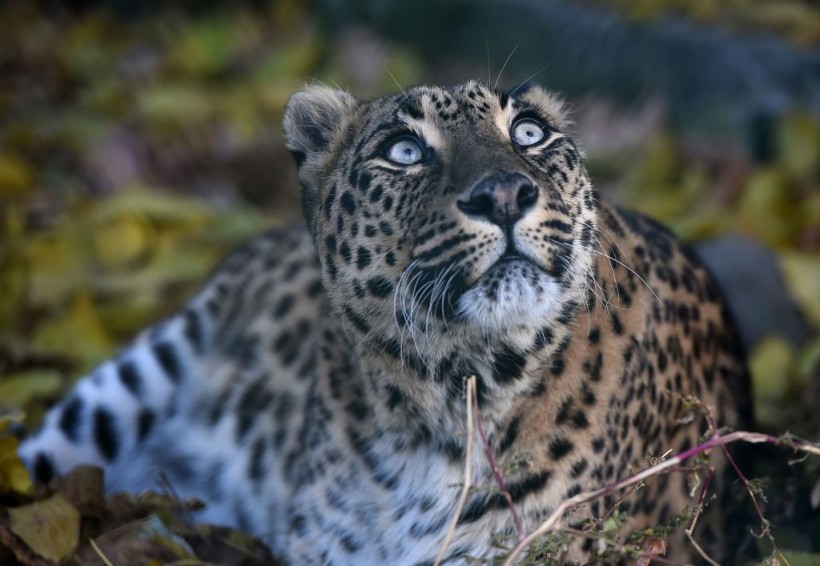A wild leopard near the Indian capital New Delhi was found to have been infected with SARS-CoV-2, the virus that caused COVID-19, and researchers want to find out how.
A young male leopard cub that died of numerous injuries to its head and neck, possibly from an animal attack, was discovered in October 2021 near a farm in rural Uttar Pradesh. Researchers from the Indian Veterinary Research Institute later found that the animal tested positive of the Delta variant of SARs-CoV-2 after carrying out a nasal swab.
Brain, spleen, lymph node, and lungs specimens were found positive for the virus strengthening the view that this wasn't simply a case of cross-contamination. The researchers explain that the "high resemblance of spike protein sequences with that of human Delta variant suggests possible spillover infection and no major genetic changes in the spike protein upon species cross over."
How the young cub was infected

A leopard rests at the Dachigam National Park outside Srinagar city on November 9, 2017. The wildlife sanctuary is home to some of the most exotic and endangered species in North India.
Last year, India had seen more people dying of COVID-19 than the whole of 2020. However, when the carcass of the wild leopard was found in October 2021, cases in India was particularly at ease and COVID-19 was not especially prolific in the local rural area, which is why experts find it unclear how the free-ranging big cat caught the infection.
Researchers' initial findings suggest "it was possibly the result of a spillover from humans." The preliminary study is yet to be peer-reviewed but was already published on bioRxiv.
"We report patho-morphological and virological characterization of SARS-CoV-2 in naturally infected, free ranging Indian Leopard (Panthera pardus fusca). Whole genome sequence analysis confirmed infection of Delta variant of SARS-CoV-2, possibly spill over from humans, but the case was detected when infection level had dropped significantly in human population," the authors wrote in the paper.
This calls for a need for intensive screening of wild animals to keep track of the virus evolution and development of carrier status of SARS-CoV-2 among wildlife species.
Also read: Sri Lanka's Hungry Elephants Die After Eating Plastic Waste in Open Landfill
Wild animal host as a potential reservoir
Although novel coronavirus has been documented in cats, dogs, tigers, mink, and other more species, the disease has not been much found in wild big cat, in fact, this case was considered a first.
However, it is not totally impossible since leopards are marginally less shy with humans compared to other wild cats. In addition, human-leopard interaction had been "increasingly common" due to ever-expanding agricultural growth on their natural habitat, in a form of conflict. Sadly, this issue has increased in severity in India in the last few decades.
Recent research warns that the virus could be abundant among wild White-tailed deer in some parts of the US, and could potentially result in that particular animal population to "becoming a reservoir that drives the emergence of new variants with risk of spillback to humans." However, they note that this finding is "purely speculative" for now, but could still have some worrying implications for the course of the pandemic.
Also read: These Animals Have the Longest Arms in the Animal Kingdom
© 2024 NatureWorldNews.com All rights reserved. Do not reproduce without permission.

![Tsunami Hazard Zones: New US Map Shows Places at Risk of Flooding and Tsunamis Amid Rising Sea Levels [NOAA]](https://1471793142.rsc.cdn77.org/data/thumbs/full/70325/280/157/50/40/tsunami-hazard-zones-new-us-map-shows-places-at-risk-of-flooding-and-tsunamis-amid-rising-sea-levels-noaa.jpg)



